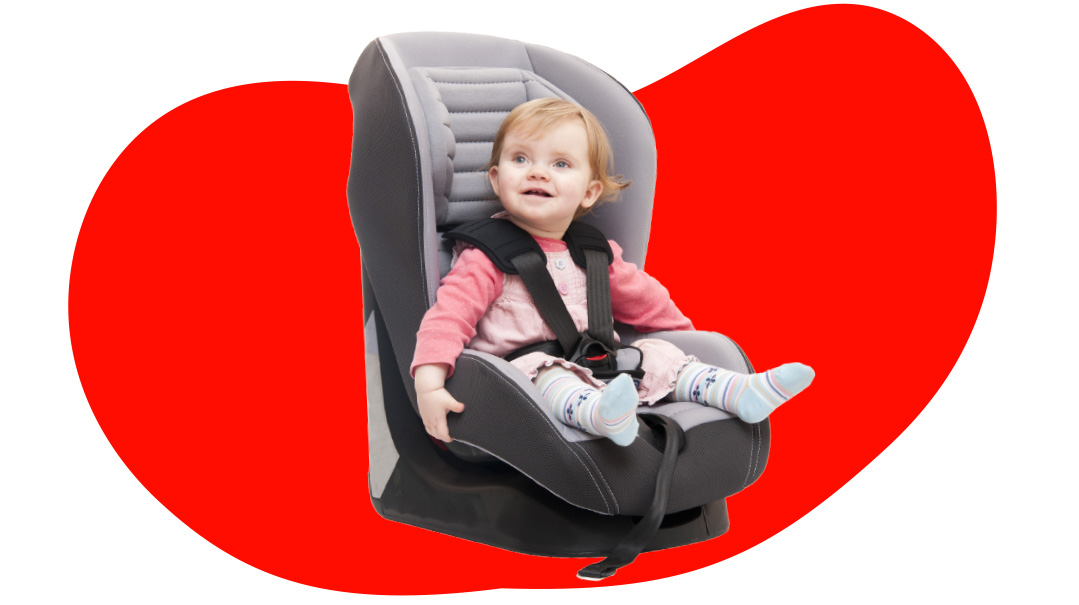Have a Safe Trip
| August 9, 2022While it’s a rite of passage to start riding in a car without a booster, making the change too early can have devastating consequences

Have a Safe Trip
Dr. Jennie Berkovich
Schlepping car seats and boosters between carpools and trips can be challenging. It’s no wonder that as soon as kids are old enough to ride without them, parents happily abandon these often unwelcome accessories.
While it’s a rite of passage to start riding in a car without a booster, making the change too early can have devastating consequences. Each year, thousands of young children are injured or killed in car crashes. Many of these tragedies could have been prevented with proper car and safety seats.
Infants and toddlers should start out in a rear-facing seat and stay in it as long as possible — at least until age two. It’s not uncommon for children’s feet to touch the back of the seat as they grow. This is safe and is not a reason to flip the car seat to face forward.
Toddlers and preschoolers can be moved to a forward-facing convertible or five-point harness seat once they’ve outgrown the rear-facing weight or height limit. Until children outweigh and outgrow the forward-facing limit for their car seat, they should use a belt- positioning booster seat either with or without a back. This typically doesn’t occur until they’ve reached four feet-nine inches in height and 10 to 12 years of age.
It’s important to wait until this point since this is when an adult seat belt usually starts to fit without adjustments. An adult seat belt fits correctly when:
- The shoulder belt lies across the middle of the chest and shoulder.
- The lap belt is low and snug across the upper thighs, not lower abdomen.
- The child is tall enough to sit against the back of the seat, with their knees bent over the edge of the seat, without slouching.
- The child is able to stay in this position comfortably throughout the trip, not just for a few minutes.
While not always convenient for carpools and trips, children under bar/bas mitzvah should always ride in the back seat. Of course, even upon transitioning to the passenger seat, seat belts should be worn 100 percent of the time that the car is moving.
While car seats can be lifesaving, never leave the child in a car seat unless the car is moving. Babies should not be left to nap or sleep in a car seat outside of a car. Never leave a baby unsupervised in a car or vehicle.
Vehicle safety is not always easy or convenient. However, taking these precautions and being safety minded when traveling can add a layer of protection for all family members and save lives!
Dr. Jennie Berkovich is a board-certified pediatrician and serves as the Director of Education for the Jewish Orthodox Women’s Medical Association (JOWMA) Preventative Health Committee.
Inflation Reaction
Sara Glaz Aloni
Now that inflation may be here to stay for a while, it’s time to review your budget. Doing a comparison of your current bills with those from a year ago might be worrisome. While you may not be able to do anything about your gas bill, think about what other categories you can begin to adjust temporarily. Where can you cut back on clothing and “wants” like subscription services and higher-end products? Every move makes a difference.
Sara Glaz Aloni is an investment advisor and financial planner at The Munk Wealth Management Group in Cedarhurst, New York.
Head to the Expert
Sarah Rivka Kohn
When a heart shows signs of disease, we find the best cardiologist. When eczema flares up, we head to the dermatologist. When diabetes needs management, we seek an endocrinologist. And when an adult shows signs of a mental health crisis, we head to the...internist?
There’s a growing trend in the frum community of getting a diagnosis and prescriptions for mental health challenges from a pediatrician or internist. Two primary reasons for this are stigma and cost.
We have no problem consulting with other specialists. Going to a cardiologist doesn’t mean you’re defective, right? So why does going to a psychiatrist mean anything different?
Cost is a big factor. An internist or pediatrician may be covered by insurance, whereas in the US, an initial psychiatric consultation can run between $350 and $1,000, and each follow-up visit can be $150 to $500. Legally, many pediatricians and internists may prescribe psychiatric medications, though they’re cautioned about doing so only when they can properly monitor the condition. So what’s the big deal?
Psychiatrists, psychiatric NPs or psychiatric PAs go to school specifically to study mental health conditions. This is after general medicine is taught. There’s no blood test that will show levels of depression, nor is there a surefire way to ascertain the correct dosage for antianxiety medication. Sadly, this field is fraught with lots of trial and error.
As a patient, you want a doctor who has made your condition his/her primary focus so that there’s (hopefully!) a whole lot less trial and error. In general medical school, there’s scant psychiatric care training. As a result, I’ve seen children and adults receive prescriptions whose dosages make no sense given their histories, as well as those who are on medications for years with refill after refill given, even though the symptoms have not eased a bit.
A good psychiatrist should be in contact with your therapist. Rarely will you get that elsewhere, and that means a lot can be missing from the picture, preventing you from accessing the right care.
So, yes, sometimes a refill or one-off can be done by an internist or pediatrician, but if your condition is going to require ongoing care, head to the doctor who is specifically trained in this area.
Sarah Rivka Kohn is the founder and director of Zisel’s Links and Shlomie’s Club, an organization servicing children and teens who lost a parent.
(Originally featured in Family First, Issue 805)
Oops! We could not locate your form.







